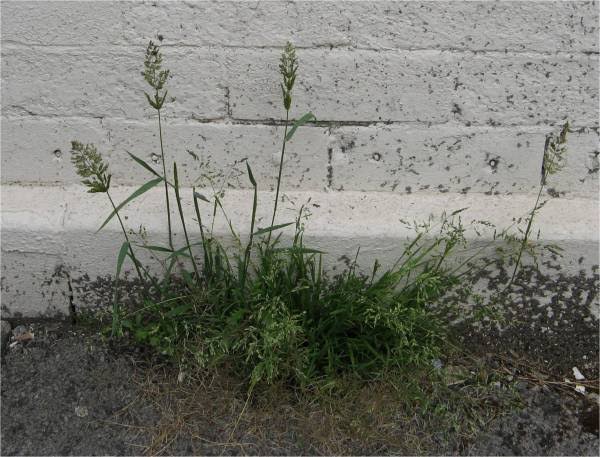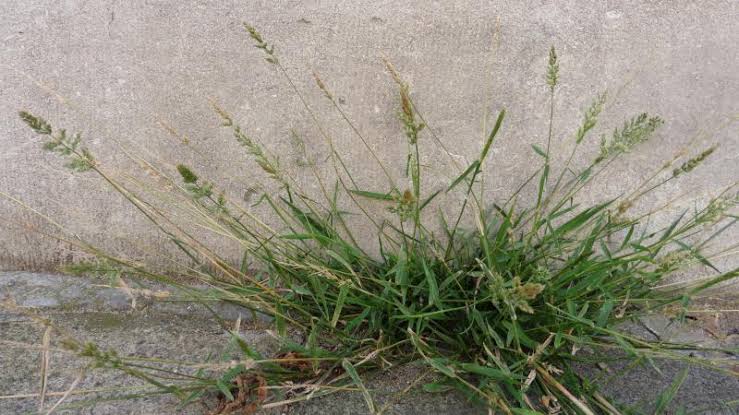Water-bent (Polypogon viridis) is a type of grass commonly found near water sources like ponds, lakes, and rivers. This green grass is known for its slender blades and unique appearance. It grows in clusters, creating a lush and vibrant carpet near the water’s edge.
This resilient plant has adapted to thrive in damp environments, showcasing its ability to withstand varying water levels. Its roots delve into the soil, firmly anchoring it against the gentle ripples of the water. The stems of Water-bent can reach moderate heights, contributing to the overall aesthetic of aquatic landscapes.
One notable characteristic of Water-bent is its role in providing habitat and shelter for various aquatic organisms. The dense clusters of grass create a protective environment for small insects, amphibians, and even fish. This not only adds to the ecological diversity but also highlights the interconnectedness of plant and animal life in these ecosystems.
In addition to its ecological importance, Water-bent serves practical purposes for humans. It helps in preventing soil erosion along water bodies, as its extensive root system helps stabilize the soil. This erosion control function is particularly crucial in areas prone to water runoff and sedimentation.
The grass also plays a role in water purification. The root system of Water-bent assists in filtering impurities, contributing to the overall health of the water ecosystem. This natural filtration process aids in maintaining water quality, benefiting both aquatic life and those who rely on these water sources.
Beyond its ecological and practical functions, Water-bent has cultural significance in some regions. It is often featured in traditional art and literature, symbolizing the beauty and serenity of aquatic landscapes. Additionally, the grass has been utilized in some traditional herbal practices for its purported medicinal properties.
In addition, Water-bent (Polypogon viridis) stands as a resilient and essential component of aquatic ecosystems. Its ability to provide habitat, prevent soil erosion, and contribute to water purification showcases the multifaceted role this unassuming grass plays in maintaining the balance of delicate water environments. Whether admired for its aesthetic qualities or valued for its ecological contributions, Water-bent remains a fascinating and integral part of the natural world.
Read Also: Ideal Spacing Required in Planting Pineapples
How To Grow Water-bent (Polypogon viridis)

Growing Water-bent (Polypogon viridis) can be a rewarding experience, especially if you want to enhance the natural beauty of aquatic environments. Here’s a simple guide on how to grow Water-bent:
1. Choose the Right Location: Select a site near a water source such as a pond, lake, or riverbank. Ensure the area receives adequate sunlight, as Water-bent thrives in well-lit environments.
2. Soil Preparation: Water-bent prefers moist soil, so it’s essential to choose a location with soil that retains water. Loamy or clayey soils are often suitable. Prepare the soil by clearing away debris and ensuring good drainage.
3. Planting Seeds: Water-bent can be propagated from seeds. Scatter the seeds evenly over the prepared soil, and lightly press them into the ground. Ensure the seeds are in close contact with the soil for optimal germination.
4. Watering: Keep the soil consistently moist, mimicking the natural habitat of Water-bent. Regular watering is crucial, especially during dry periods, to support germination and early growth.
5. Maintenance: As the Water-bent begins to grow, monitor its progress and provide additional water if necessary. Remove any competing weeds to give the grass space to flourish.
6. Fertilization (optional): While Water-bent can often grow well without additional fertilizers, you may choose to use a balanced, slow-release fertilizer to promote healthy growth. Apply the fertilizer according to the product’s instructions.
7. Pruning (optional): Depending on your aesthetic preferences, you may choose to prune Water-bent to maintain a specific height or shape. However, in natural settings, this is often unnecessary.
8. Enjoy the Growth: Sit back and enjoy the beauty of Water-bent as it establishes itself along the water’s edge. Observe how it contributes to the ecosystem and provides a lush green backdrop to aquatic environments.
9. Expansion: If you desire more Water-bent coverage, you can allow the grass to spread naturally. Alternatively, collect seeds or rhizomes for transplantation to new areas.
10. Be Mindful of Local Regulations: Before planting Water-bent or any other vegetation, be aware of local regulations and environmental considerations. Some regions may have guidelines to protect native flora and fauna.
By following these steps, you can contribute to the growth of Water-bent and create a visually appealing and ecologically beneficial environment along the water’s edge.
How To Care For Water-bent (Polypogon viridis)
Caring for Water-bent (Polypogon viridis) involves maintaining its ideal growing conditions and ensuring it thrives in its natural habitat. Here are some care tips:
1. Watering: Water-bent naturally thrives in moist environments, so regular watering is essential. Keep the soil consistently damp, especially during dry periods. Ensure that the water source is clean and free from contaminants.
2. Sunlight: Water-bent prefers locations with ample sunlight. Ensure the grass receives sufficient sunlight to promote healthy growth. If planting in shaded areas, monitor the grass to ensure it gets enough light for photosynthesis.
3. Soil Quality: The grass prefers loamy or clayey soils that retain moisture. Periodically check the soil quality and drainage to ensure it remains conducive to Water-bent’s growth. Amend the soil as needed to maintain an optimal environment.
4. Weed Control: Regularly inspect the area around Water-bent for invasive weeds that may compete for nutrients. Remove any unwanted vegetation to provide the grass with ample space to flourish.
5. Pruning (optional): While Water-bent generally doesn’t require pruning in natural settings, you may choose to trim or shape the grass for aesthetic purposes. Be mindful not to disturb the natural balance of the ecosystem.
6. Protection from Disturbances: Avoid unnecessary trampling or disturbances around the Water-bent area. The grass contributes to the ecosystem by providing habitat for various organisms, and minimizing human interference helps maintain its ecological function.
7. Monitoring for Pests and Diseases: Keep an eye out for any signs of pests or diseases that may affect Water-bent. Early detection and appropriate action can prevent the spread of issues and maintain the health of the grass.
8. Natural Expansion: Allow Water-bent to spread naturally if you want to encourage its growth. The grass has a tendency to propagate through seeds and rhizomes, contributing to its lush appearance along the water’s edge.
9. Environmental Awareness: Stay informed about the local environment and any changes that may impact Water-bent. Be mindful of conservation efforts and follow guidelines to protect native flora and fauna.
10. Regular Observation: Regularly observe the condition of Water-bent to ensure it continues to thrive. Appreciate its contribution to the ecosystem and the visual appeal it brings to aquatic environments.
By following these care tips, you can help ensure the health and vitality of Water-bent in its natural habitat. Remember that fostering a balanced and sustainable ecosystem is key to maintaining the beauty and functionality of this resilient grass.
Read Also: Maturity Period and Harvesting of Pineapple Fruits
The Uses of Water-bent (Polypogon viridis)

Water-bent (Polypogon viridis) serves various ecological, practical, and cultural purposes, contributing to the well-being of both the environment and human communities.
1. Ecological Habitat: Water-bent plays a crucial role in providing habitat and shelter for diverse aquatic organisms. Its dense clusters create a protective environment for small insects, amphibians, and fish, contributing to the overall biodiversity of aquatic ecosystems.
2. Soil Erosion Prevention: The extensive root system of Water-bent helps stabilize the soil along water bodies, preventing erosion. This erosion control function is particularly valuable in areas prone to water runoff and sedimentation, preserving the integrity of the shoreline.
3. Water Purification: The root system of Water-bent assists in filtering impurities from the water, contributing to water purification. This natural filtration process helps maintain water quality, benefiting both aquatic life and communities that rely on these water sources.
4. Aesthetic Appeal: Water-bent enhances the visual appeal of aquatic landscapes with its lush greenery. It is often featured in traditional art and literature, symbolizing the beauty and serenity of water environments.
5. Cultural Significance: In some regions, Water-bent holds cultural significance and may be incorporated into traditional practices. Additionally, the grass may have symbolic meaning in local folklore or rituals.
6. Traditional Herbal Uses (limited): While not extensively documented, Water-bent has been used in some traditional herbal practices for its purported medicinal properties. However, caution is advised, and any medicinal use should be based on verified information.
7. Environmental Education: Water-bent serves as an excellent educational tool to raise awareness about the importance of maintaining healthy aquatic ecosystems. Its role in providing habitat, preventing soil erosion, and contributing to water purification can be highlighted in environmental education programs.
8. Recreational Spaces: Areas where Water-bent thrives can become appealing recreational spaces. People may enjoy activities like bird watching, fishing, or simply appreciating the natural beauty of these habitats.
9. Conservation and Restoration: Water-bent can be strategically used in conservation and restoration efforts to rehabilitate degraded aquatic ecosystems. Its ability to stabilize soil and enhance biodiversity makes it a valuable asset in environmental restoration projects.
10. Erosion Control in Landscaping: Beyond natural water bodies, Water-bent can be utilized in landscaping projects near artificial ponds or water features to prevent soil erosion and add a touch of natural beauty.
In addition, Water-bent serves a multifaceted role, from supporting aquatic life and preventing soil erosion to enhancing the aesthetic appeal of water environments. Understanding and appreciating its various uses can contribute to sustainable management and conservation efforts in diverse ecosystems.
Frequently Asked Questions (FAQs)
Q: What is Water-bent (Polypogon viridis)?
A: Water-bent, scientifically known as Polypogon viridis, is a type of grass commonly found near water sources such as ponds, lakes, and rivers. It is characterized by its slender blades and is known for its ability to thrive in moist environments.
Q: Where does Water-bent grow?
A: Water-bent typically grows in areas with abundant moisture, often near the edges of ponds, lakes, rivers, or other water bodies. It prefers soil that retains water and receives ample sunlight.
Q: What ecological role does Water-bent play?
A: Water-bent plays a crucial ecological role by providing habitat and shelter for various aquatic organisms. Its root system helps prevent soil erosion, and it contributes to water purification by filtering impurities.
Q: How can I grow Water-bent in my garden?
A: To grow Water-bent, choose a location with moist soil near a water source. Plant seeds evenly, keep the soil consistently damp, and provide sufficient sunlight. Regular watering, weed control, and monitoring for pests contribute to successful growth.
Q: Does Water-bent have any cultural significance?
A: In some regions, Water-bent may have cultural significance and be featured in traditional art or literature. Additionally, it may hold symbolic meaning in local folklore or rituals.
Q: Can Water-bent be used for landscaping?
A: Yes, Water-bent can be used in landscaping projects, especially near artificial ponds or water features. It contributes to erosion control, adds a natural aesthetic, and enhances the overall appeal of landscaping.
Q: Is Water-bent invasive?
A: Water-bent is not typically considered invasive. However, it’s essential to be mindful of its growth and prevent it from overcrowding native vegetation in certain ecosystems.
Q: How can Water-bent be beneficial in water purification?
A: The root system of Water-bent assists in filtering impurities from the water, contributing to natural water purification. This makes it beneficial for maintaining water quality in aquatic ecosystems.
Q: Can Water-bent be used for medicinal purposes?
A: While there are limited documented uses, Water-bent has been mentioned in some traditional herbal practices for its purported medicinal properties. However, caution is advised, and any medicinal use should be based on verified information.
Q: Does Water-bent require special care?
A: Water-bent thrives with regular watering, adequate sunlight, and proper soil conditions. Monitoring for pests, preventing soil erosion, and allowing natural expansion contribute to its health. Pruning is optional and generally not necessary in natural settings.
Read Also: How to Grow Microgreens
